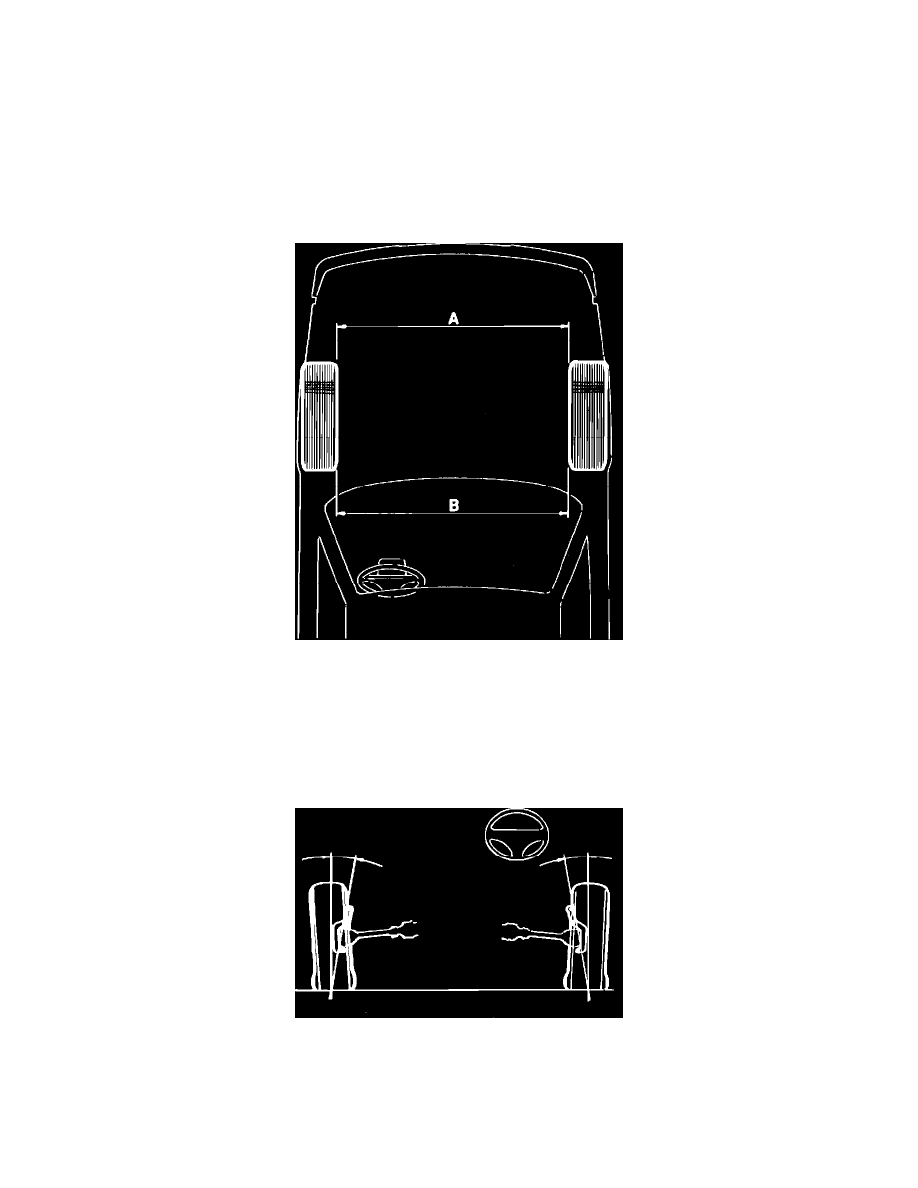Regal V6-173 2.8L (1988)

Alignment: Service and Repair
PRELIMINARY CHECK
1.
Ensure tires are inflated to correct pressure, and check for uneven wear.
2.
Check front wheel bearings and related suspension components for damage and replace as necessary, to eliminate improper alignment due to
faulty components.
3.
Check steering gear and adjust as necessary.
4.
Check shocks for damage and replace as necessary.
5.
Rock vehicle backward and forward and bounce it upward and downward to settle vehicle prior to alignment.
6.
Ensure vehicle is unloaded and on a suitable alignment rack following manufacturers' instructions. When measuring equipment is attached
directly to outer end of driveshaft and front wheels are on turntables, apply brake to prevent improper vehicle movement.
Fig. 1 Measuring wheel alignment angles
TOE SETTING
As viewed from above, the wheels must be set so that distances A and B, Fig. 1, measured at wheel rims and at axle height, are different at a given
value. If distance A is smaller than distance B, the setting is known as toe-in. If Distance A is greater than distance B, the setting is known as toe-out.
The toe setting is given in inches and refers to the difference between A and B. If distances A and B are the same, the toe setting is 0.
Toe setting is controlled by tie rod position. Adjustment is made by loosening the nuts at the steering knuckle end of the tie rods, and rotating the rod
ends until proper toe setting is obtained.
Fig. 2 Measuring camber
CAMBER SETTING
DESCRIPTION
Camber refers to the angle at which a wheel leans in or out as shown, Fig. 2. Positive camber is when the wheel leans outward and negative camber is
